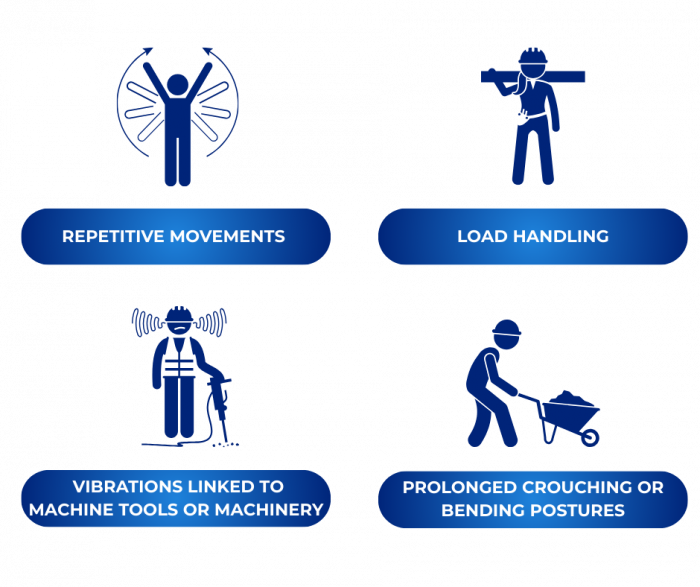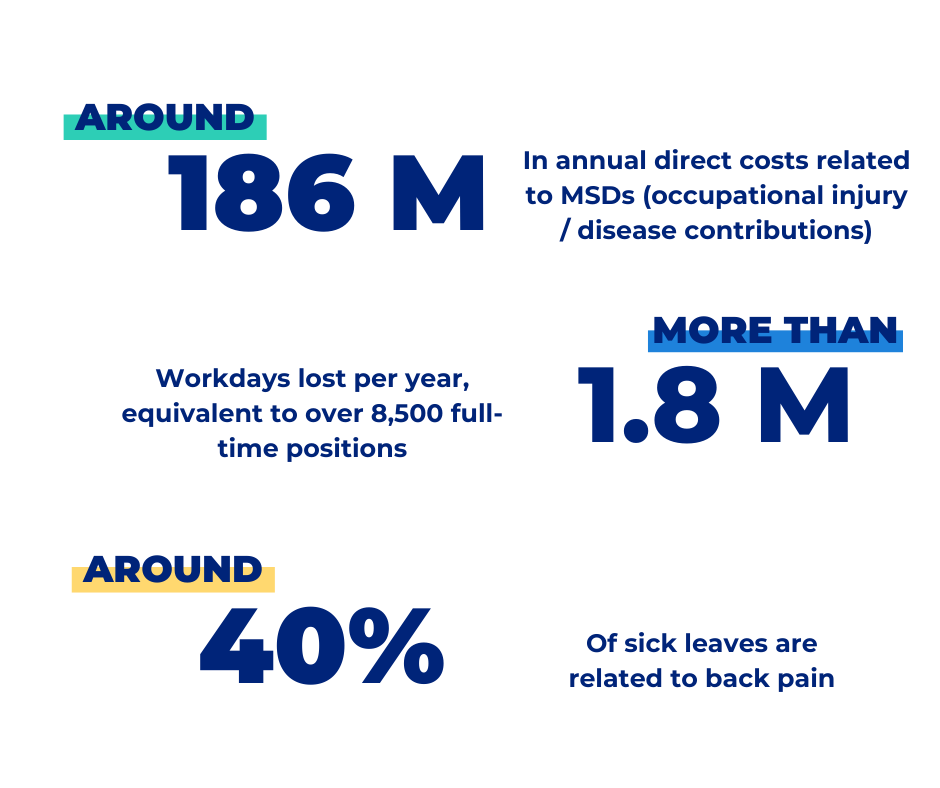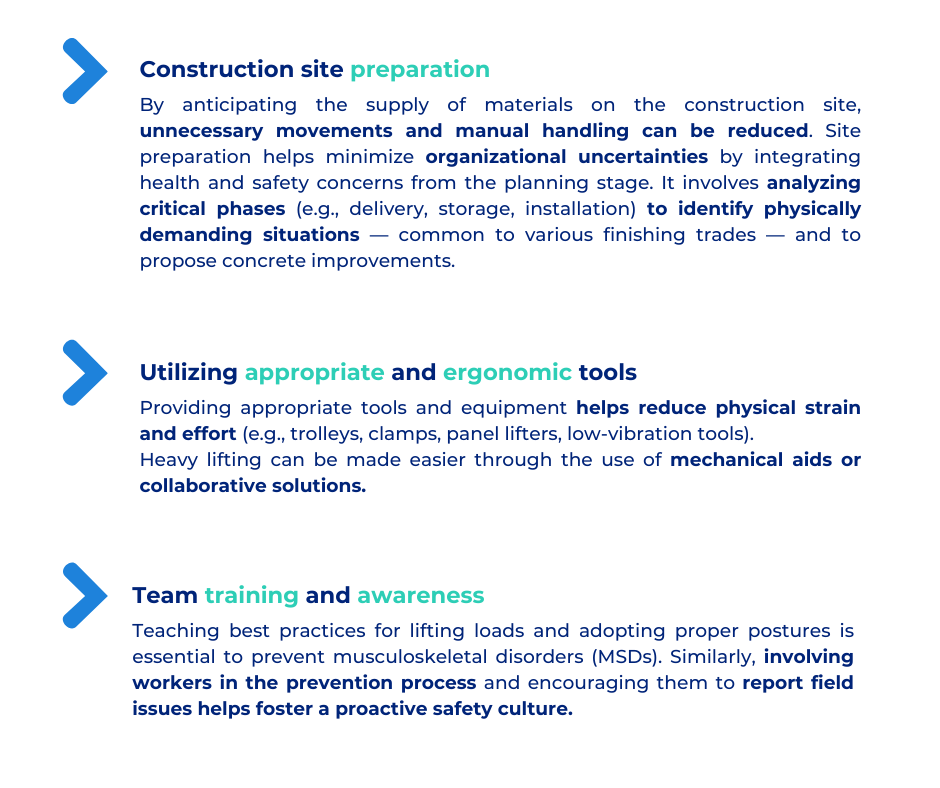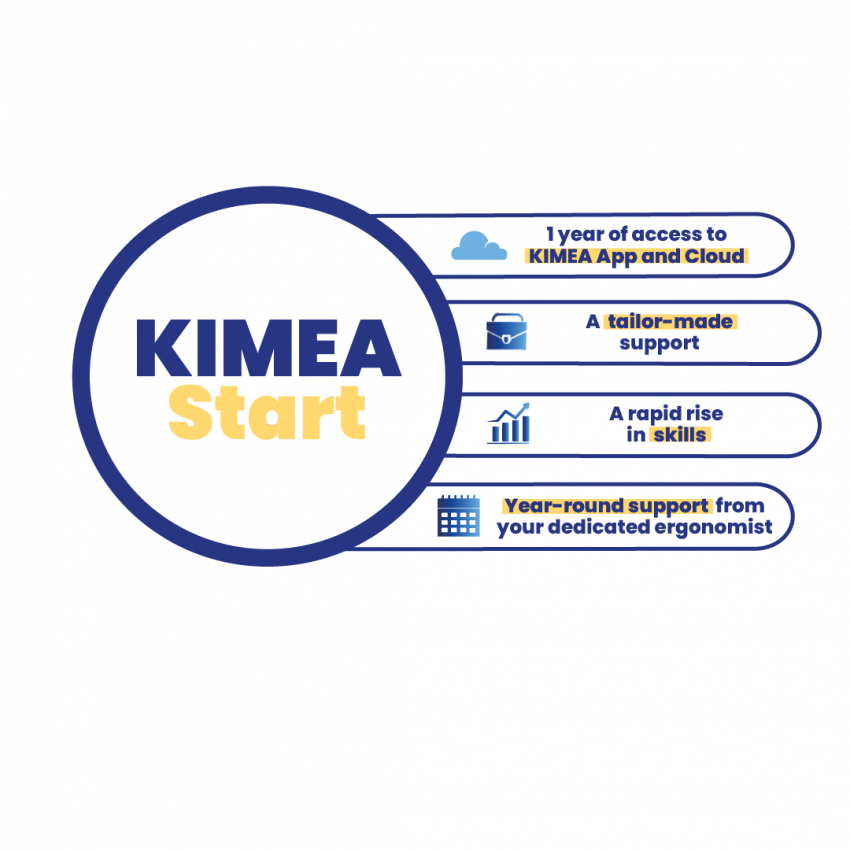Use case: MSD in the construction and public works sector
Identifying risks and implementing solutions
In the construction and public works sector (BTP), workers’ physical health is severely tested. According to the French National Health Insurance (Assurance Maladie), 87% of recognized occupational diseases in this sector are related to musculoskeletal disorders (MSDs). These conditions are the leading cause of work-related compensation in this strategic industry.
This alarming figure is explained by a higher exposure to biomechanical constraints compared to other sectors. According to the SUMER survey (2010–2017), 50.9% of employees in the construction and public works sector were exposed to at least one biomechanical constraint, compared to 24.8% in other industries.
- Construction worker: a high-risk occupation
Over the course of their career, a construction and public works employee will experience 2.5 occupational accidents and accumulate 220 days of sick leave (due to a work-related accident or occupational illness). On average, each year, one in every 18 employees in the sector is the victim of a workplace accident.
Source : Assurance Maladie
How can the well-being of construction workers facing MSDs be reconciled with business performance in a sector marked by high physical strain?
- The most common risk factors for MSDs in the construction and public works sector:

- Impacts on worker health:
MSDs encompass several conditions, with the most common in the construction sector including:
- Tendinitis (shoulder, elbow, wrist)
- Carpal tunnel syndrome
- Bursitis
- Lower back pain and herniated discs
More than 10% of workplace accidents in the construction industry are linked to lower back pain or spinal issues.
- Impacts on the company:
The consequences of MSDs are not only human — they also place a heavy burden on professional organizations.

Source : Assurance Maladie, figures for 2016-2017
To this are added indirect costs: team disruption, overtime, reliance on temporary workers (turnover), loss of know-how, project delays, and reduced productivity…
So, what can be done?
Risk reduction in the construction sector relies on prevention and the implementation of effective solutions.

Financial support is available to assist you: Fonds FIPU
The FIPU (Investment fund in professional wear prevention) supports the financing of preventive actions targeting three so-called “ergonomic” risk factors:
- Manual handling of loads
- Strenuous postures, defined as forced joint positions
- Mechanical vibrations
This subsidy can take various forms: financial assistance for the purchase of ergonomic equipment, guidance and support for adapting workstations, or training programs aimed at raising employee awareness of proper ergonomic practices.
We offer you KIMEA
Why choose Kimea by Moovency ?
To address MSDs risks on your worksites, discover KIMEA START.
KIMEA START, A comprehensive turnkey solution for preventing MSDs.
KIMEA START is an all-inclusive one-year package that guides you towards sustainable prevention by providing :
- One year of access to KIMEA APP – our data capture tool;
- One year of access to KIMEA CLOUD – our analysis platform;
- Dedicated support and follow-up with your assigned ergonomist.
Most importantly, you’ll leave with the tools and knowledge to kickstart your MSD prevention strategy.

In terms of prevention, adopting a continuous optimization approach ensures you deliver the best and constantly improve your employees’ well-being. You stay up-to-date.
We also offer training services. We train your internal teams to use our KIMEA suite of tools to assess workstations. This way, you are no longer dependent on another company for physical risk measurements. You only need to consult ergonomists for complex situations that require a specialist.
A tool like KIMEA is ideal for ensuring ongoing optimization of workstations : with the KIMEA score and visual indicators, you can assess your progress at a glance
